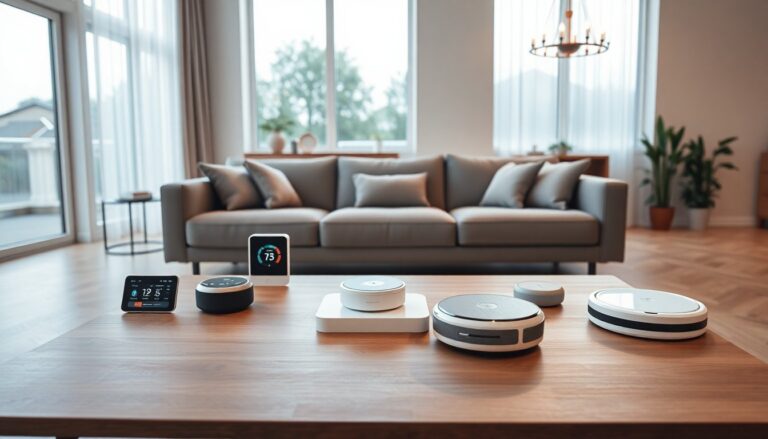Argomenti trattati
In an era where technology seamlessly integrates into daily life, smart home gadgets have emerged as transformative tools. These devices enhance convenience while improving security and energy efficiency. From voice-activated assistants to smart thermostats, the range of available gadgets is extensive and expanding. This article explores the significant impact of these devices on modern living, advocating for their integration into households.
Understanding smart home gadgets
At their core, smart home gadgets are devices that connect to the internet or a local network, enabling remote control. This connectivity allows homeowners to monitor and manage various aspects of their living environment from virtually anywhere, typically through a smartphone or tablet. The rise of Internet of Things (IoT) technology has been crucial in this evolution, allowing devices to communicate and create a cohesive smart home ecosystem.
Key features of smart home gadgets
Smart home gadgets are equipped with several features that enhance functionality. Firstly, remote control capabilities enable users to manage devices without being physically present. For example, smart thermostats can be adjusted to save energy while homeowners are away, ensuring a comfortable environment upon their return. Secondly, many gadgets offer automation capabilities, allowing users to set schedules or routines. For instance, a smart lighting system can be programmed to turn on at sunset, providing illumination without manual intervention.
Popular smart home gadgets and their benefits
The variety of smart home gadgets available today ranges from simple devices to complex systems. Some of the most popular options include:
Smart speakers and assistants
Devices like the Amazon Echo and Google Nest serve as central hubs for smart home control. These voice-activated assistants allow users to issue commands, play music, or check the weather, all hands-free. Furthermore, they can integrate with other smart devices, enabling users to control lights, locks, and appliances via simple voice commands.
Smart security systems
Home security has been revolutionized by smart gadgets such as smart cameras, doorbell cameras, and smart locks. These devices provide real-time surveillance and alerts, enabling homeowners to monitor their property remotely. For example, a smart doorbell can notify users when someone is at their door, allowing two-way communication through a smartphone app, which enhances security and convenience.
Challenges and considerations
While the benefits of smart home gadgets are numerous, potential challenges must be acknowledged. One significant concern is privacy and security. With devices connected to the internet, there is a risk of hacking or unauthorized access to personal data. Homeowners should ensure their devices are secure by using strong passwords and regularly updating software to mitigate these risks.
Installation and compatibility issues
Another challenge involves the installation and compatibility of various devices. Not all smart gadgets work seamlessly together, which can lead to frustration for users attempting to create a unified smart home system. It is essential to research and choose compatible products or consult professionals for installation to ensure a smooth integration process.
The future of smart home technology
The future of smart home gadgets appears promising, with continuous advancements in technology paving the way for innovative solutions. As artificial intelligence and machine learning evolve, gadgets are expected to become even more intuitive and responsive to user needs. Smart homes will likely incorporate health monitoring systems, energy management solutions, and enhanced security features that not only simplify life but also promote sustainable living.
Smart home gadgets are reshaping the way people live, offering unprecedented levels of convenience, security, and efficiency. As technology continues to advance, embracing these innovations will enhance living experiences, making homes smarter and more aligned with individual lifestyles.

